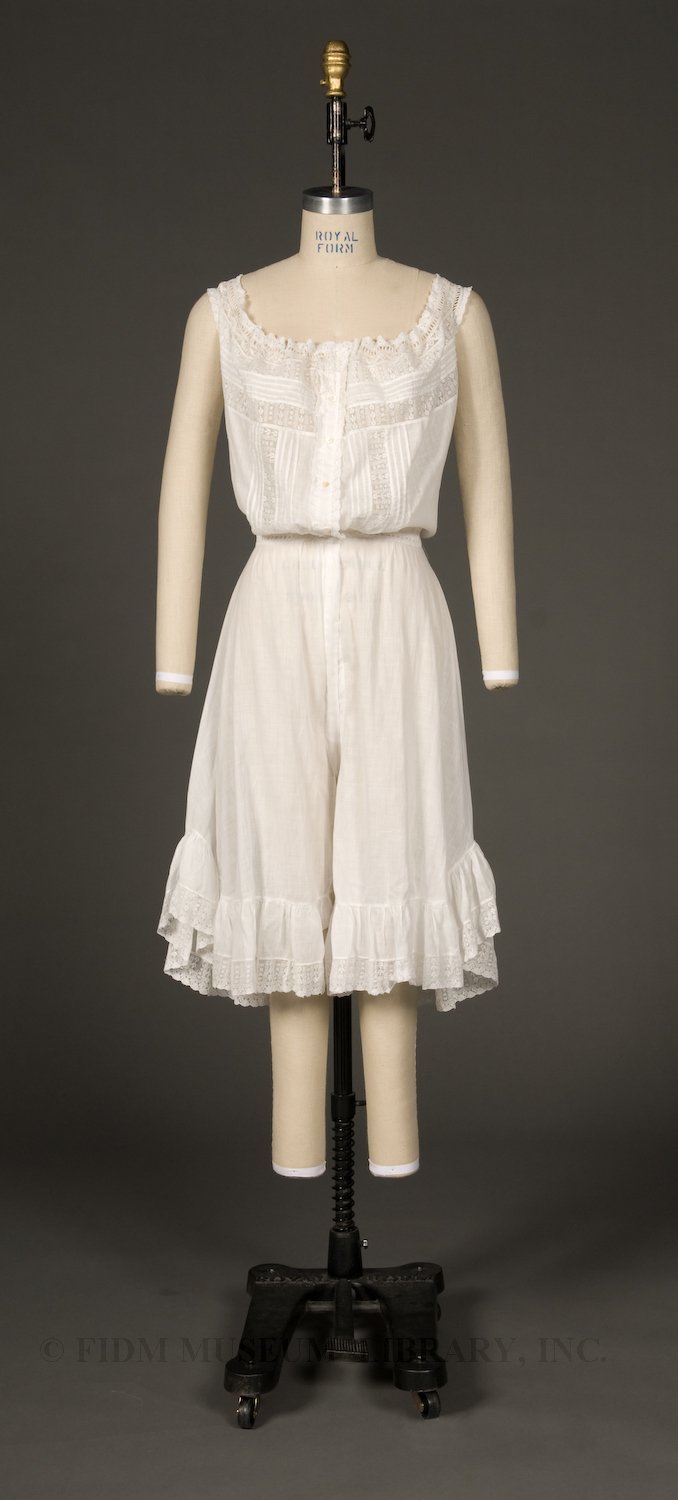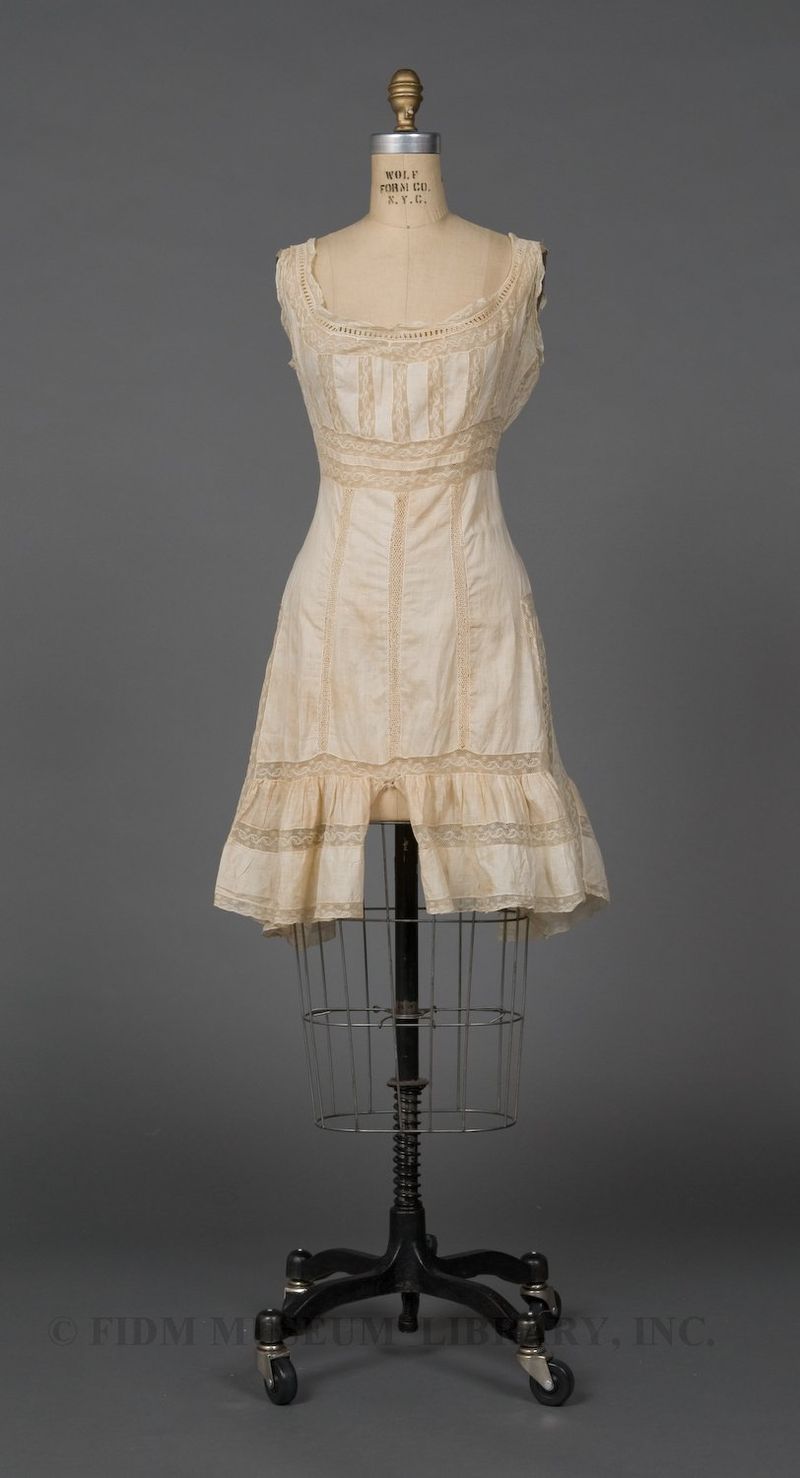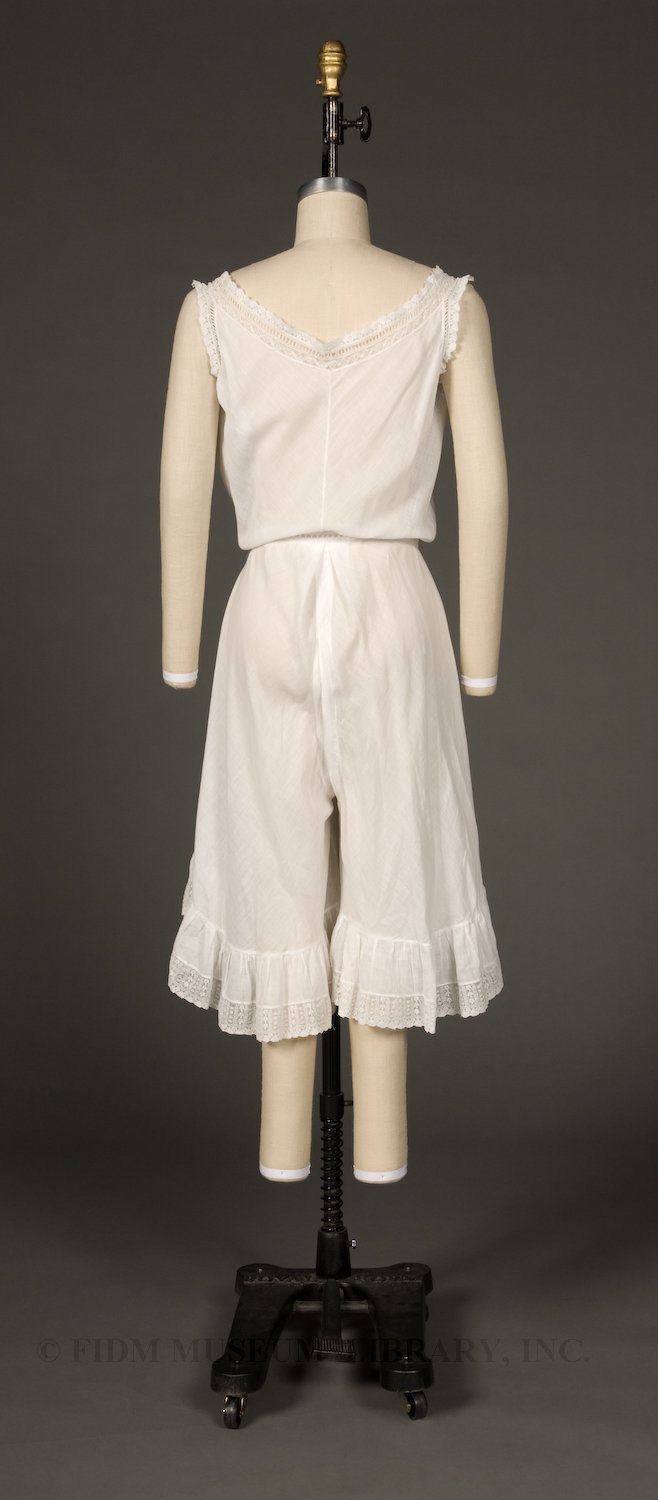Combination undergarments
Combination undergarments, which combined chemise and drawers into one garment, first appeared in the late 1860s or early 1870s. By the 1890s, combinations had largely replaced the long chemise worn over a separate pair of drawers. The advantage of the all-in-one combination undergarment was its relative lack of bulk. Drawers had a gathered drawstring waist and when worn under a loose chemise, petticoat(s), corset and dress, they created an unnecessary layer of bulky, gathered fabric at the waist. A 1905 advertisement for the Leona combination undergarment sings the praise of combinations in general, and the Leona in particular, declaring "Leona leaves no fullness, puckers or bunches at the waist or hips."1
 Combination undergarment
Combination undergarment
Cotton
1900-1910
Gift of California Hospital Medical Center
S2007.165.1
In the 19th century, combinations were usually made of extremely fine, lightweight cotton fabrics like lawn, batiste, or muslin. In the early years of the 20th century, they were often made of silk. Even though a combination was the foundation layer, and therefore not meant to be seen, they were often decorated with lace or embroidery. The combination pictured above features machine lace inserts at bodice and hem, along with delicate bodice pintucks. The low, rounded neckline can be individually sized through tightening or loosening the neckline ribbon, which is inserted through small slits. Though the waistband is obscured by the bloused bodice, it is made of eyelet-type lace, also with slits for an inserted ribbon. The center front button closure seen here is typical of combination undergarments of the 19th century; in the 20th century, the closure was more often on the back of the garment.
Fashion scholars have noted that combination undergarments became widely popular in the 1880s, the same era that dress reformers were promoting their views on women's dress. Based on the premise that women's dress was irrational, unhealthy and unsanitary, dress reformers advocated for a variety of changes, including the abolition of corsets, a reduction in the layers of undergarments worn and the adoption of  Combination undergarment
Combination undergarment
Cotton
1910-12
Gift of Mrs. Roxanne Wilson
S2003.1.12
The combination undergarment pictured above demonstrates the way in which undergarments became increasingly short and fitted to the body in the 20th century. Compared to the 1900-1910 combination undergarment pictured above, the 1910-12 version is positively racy! Not only is it shorter and more fitted, the numerous lace inserts both suggest and obscure the body underneath. Though combinations were worn into the 1920s, they had to compete with an increasing variety of undergarments, including the newly introduced brassiere. By the 1930s, combinations were worn primarily for warmth, not as an undergarment in itself.
1 Probert, Christina. Lingerie in Vogue Since 1910. New York: Abbeville Press. 1981.: 15.
